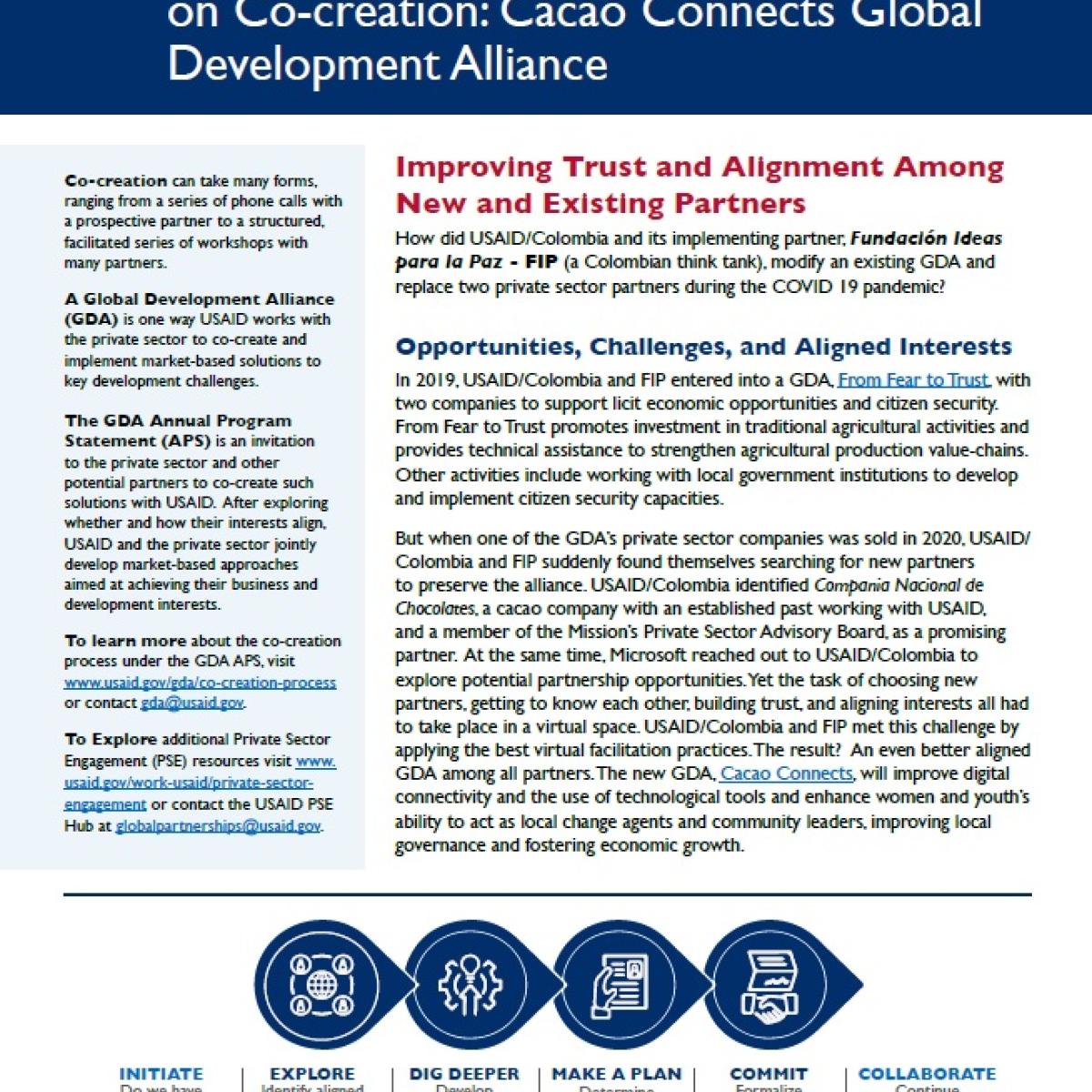Market-based approaches use business models and market forces to address development and humanitarian challenges more sustainably and/or at scale. A market-based approach can engage low-income people as customers, and supply them with products and services they can afford; or, as business associates (suppliers, agents, or distributors), to provide them with improved incomes. When a market-based solution becomes commercially viable, the private sector has a financial incentive to continue and operate it at scale, which increases the sustainability of the intervention, and decreases the need for donor support over time. (Source: Adapted from Monitor. “Promise and Progress Market-based Solutions to Poverty in Africa”)
A Focus on More-Sustainable Outcomes
In pursuing market-based approaches, USAID seeks more sustainable development impact over time. Programs contribute to sustainability when they strengthen the system’s ability to produce valued results, to generate or attract needed resources, and be both resilient and adaptive in the face of changing circumstances.
In what ways do market-based approaches contribute to sustainable development?
- A market-based approach could support the private sector to develop a pay-per-use model that expands sanitation infrastructure and services that underserved customers would previously not be able to access.
- A market-based approach could build the healthcare ecosystem through technical assistance and access to finance that allows for better provision of care through small and medium enterprises.
- When a market-based solution becomes commercially viable, the private sector has a financial incentive to continue and operate it at scale, which will decrease the need for donor support over time.
How does USAID pursue market-based approaches? An illustrative example:
To illustrate how USAID uses market-based approaches, consider a USAID Mission officer who is seeking to improve nutrition outcomes and decrease child-mortality rates. The staff member could design and fully fund a grant for a public health campaign, or alternatively consider a range of potentially more-sustainable and cost-effective PSE options, including the following:
- Engaging a private manufacturer to align efforts in support of a behavior-change campaign;
- Coupling technical assistance with catalytic capital to enable private providers to offer nutrition counseling and stock quality nutritional supplements;
- Convening public entities with international and local private sector organizations to co-create solutions that address the lack of distribution channels to deliver existing supplements;
- Providing seed funding to promising innovations that address specific micronutrient deficiencies (e.g., edible cooking oils fortified with vitamins); and,
- Designing jointly with government and private sector partners a milestone-based grant to incentivize public and private clinics to integrate the diagnosis and treatment of malnutrition into primary care visits.
Market-based Approaches: Explore Examples and PSE Stories
Harnessing Private Sector Expertise and Innovation: Engagement that harnesses innovation, technology, research and development, industry expertise, and/or entrepreneurial skills to achieve development outcomes.
- Tapping Private Sector Manufacturing Expertise for Maternal and Child Health: In Nepal, one in 28 children dies before his or her fifth birthday. Many newborns die from preventable infections of their umbilical cords. Working with local manufacturers and the Nepalese Government, USAID funded the introduction and scale up of a life-saving intervention: chlorhexidine antiseptic gel. When the gel is applied within 24 hours of birth in high-risk settings, neonatal deaths drop, on average by 23 percent. Producing chlorhexidine locally through private-sector partners built in-country capacities that support Nepal’s Journey to Self-Reliance. A local manufacturer has also supplied the life-saving gel to other countries.
Unlocking Private Investment: Engagement that addresses constraints to a transaction or broader investment. The emphasis is on activities that can be replicated or brought to scale, inclusive of efforts to “crowd in” and shape investment.
- Coffee Farmer Resilience Initiative: In Central America, USAID worked with Root Capital, Keurig Green Mountain, Cooperative Coffees, and Equal Exchange to help 40,000+ smallholder farmers combat coffee rust, a disease that threatened their harvests. USAID provided Root Capital with a $15 million DCA credit enhancement to cover the risks of lending to cooperatives. Keurig Green Mountain is covering the Fund’s first $400,000 in potential losses. By mitigating risk and acting as first movers, USAID and Keurig have attracted new investors, and an additional $8 million.
See additional market-based approaches through the PSE Exposure blog platform







